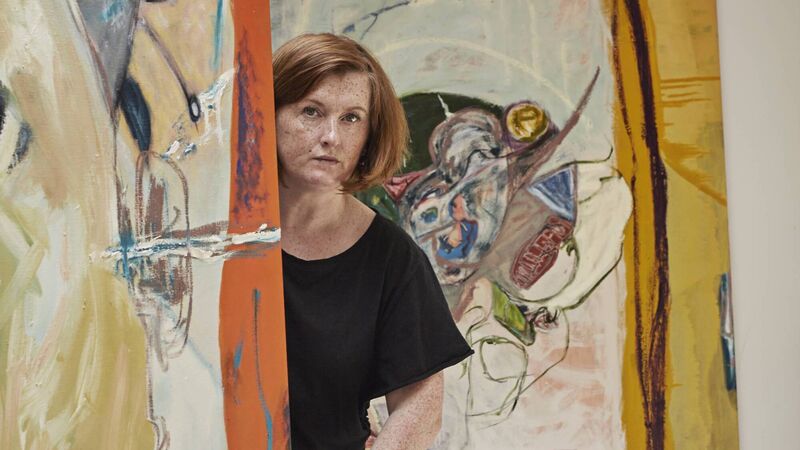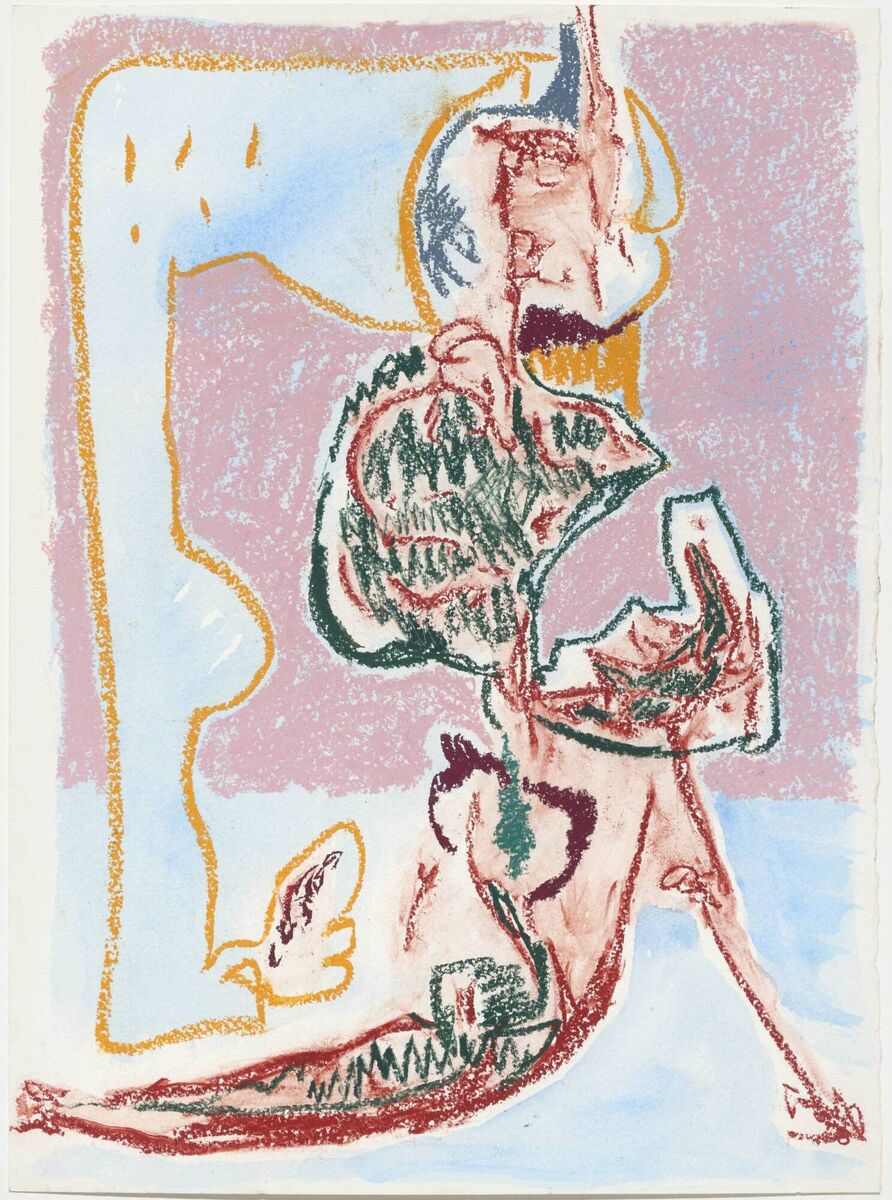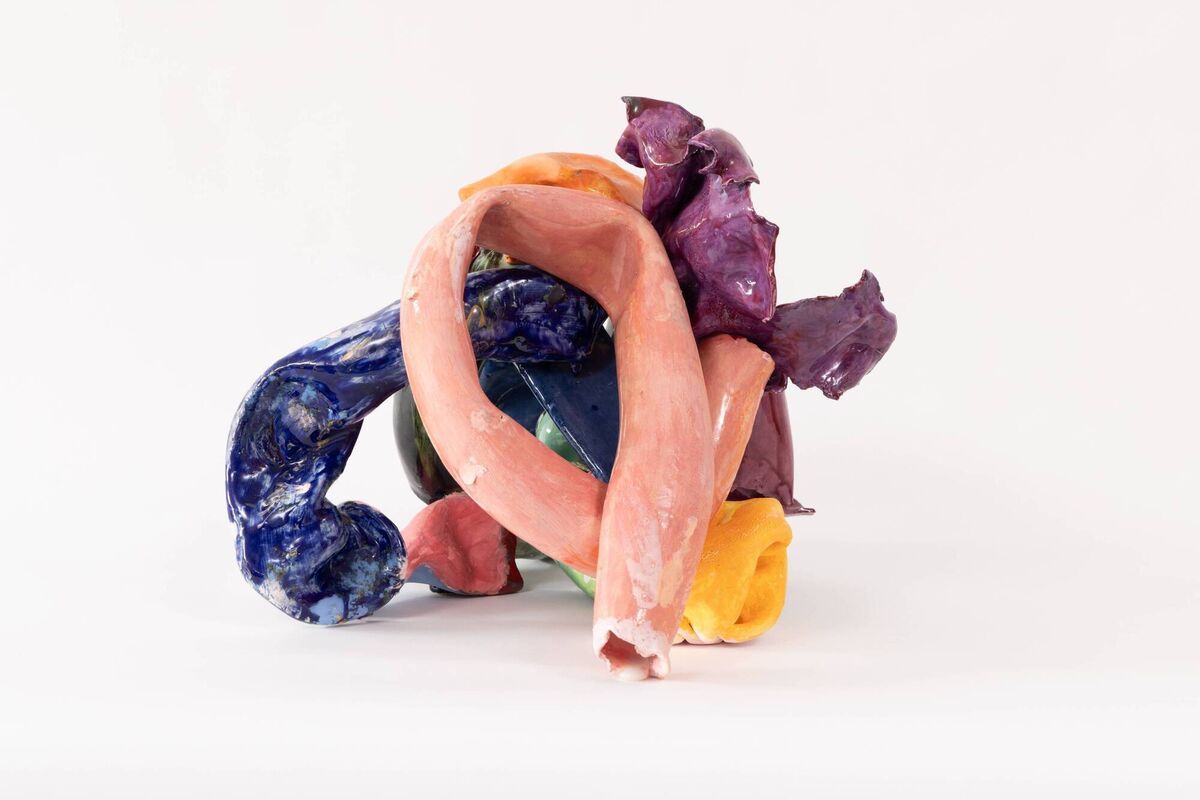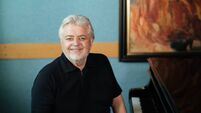Sarah Dwyer: ‘You have to keep moving and keep changing to stay relevant’

Sarah Dwyer. Picture: Alex Sarginson
Penti Menti, Sarah Dwyer’s new exhibition at Uillinn: West Cork Arts Centre, is a homecoming of sorts. Dwyer grew up in Cork, but moved to the UK with her family when she was 14, and is now based in London.
“My father was a builder,” she says. “After the crash of 1989, he went to England to get work. He commuted for a year or so, and then we all moved over. When my parents retired, they moved back to Inniscarra. My father’s passed on now, but my mother still lives there, so I come back often.”
Penti Menti at the Skibbereen venue is curated by Eamon Maxwell, the former director of Lismore Castle Arts, and is Dwyer’s first solo institutional exhibition in Ireland, though it comes after any number of solo and group shows in London, New York and Europe. The title is a play on ‘pentimento’, a term derived from Italian, and used by painters to describe a change of mind in relation to their work.
Dwyer had several changes of mind before settling on art as her career. “I was quite academically inclined as a 17/18-year-old,” she says.
“And when I finished school, I went on to study Politics, Philosophy and Economics at Oxford. I would have loved to study Fine Art, but it was a case of keeping my parents happy. I think in retrospect it was a good thing; after Oxford, I got a scholarship to study Economics in Chicago.
“I moved to San Francisco after that, to work for the AIDS Foundation, writing and editing their newsletter. That led to more editorial work in Paris, where I lived for a few years. I was lucky; I had a salary, and I could afford to visit all the major museums in the US and Europe. Even when I lived in Paris, I could get a flight to New York for the equivalent of £100. When other people were out nightclubbing for the weekend, I was flying to New York and touring the museums. And then, through my work, I got to travel to the Middle East and Africa, places that an artist wouldn’t often get to visit.”

Dwyer studied life drawing and art history along the way, and finally, at 29, she moved back to the UK and began studying for a Master’s in Fine Art at Staffordshire University. She went on to complete a second Master’s, in Painting, at Royal College of Art, London in 2004.
“I wanted to learn in a more formal, traditional environment, and the Royal College was amazing,” she says. “There were only 20 students in Painting, and we had access to great teaching and facilities.”
It was around the time the Young Brit Artists – Damien Hirst et al – were making a splash. “I had Tracey Emin and a couple more of those YBAs teach me,” she says.
“I don’t think they really influenced my work, but I did learn that there is a commercial aspect to artmaking, and how important it is to get your work out there. I was lucky to be one of the next generation of artists, post-YBA. Charles Saatchi bought my work, and I sold to some very big collections in the US. But it’s all cyclical, you know. You have to keep moving, and keep changing, to stay relevant.”
After college, Dwyer found part-time work as a publications editor at the publisher’s, Faber and Faber, which led to a position as assistant to one of the company’s major shareholders, TS Eliot’s widow Valerie.
“I helped Valerie run the TS Eliot Poetry Prize and her charity, Old Possum’s Practical Trust. I’d accompany her to poetry readings, exhibition openings and the theatre. We’d always be in great company; I met so many warm, fun, charming people. Séamus Heaney often came to her house for lunch. I stayed with Valerie until her passing in 2012.”
All the while, Dwyer continued developing her practice as a painter, sculptor and printmaker. Her work is noted for her brilliant use of colour, which she attributes to the influence of the Abstract Expressionists. “People like Philip Guston and Willem de Kooning and Arshile Gorky.”

Dwyer also admires the avant garde COBRA movement, founded in Paris in 1948, whose members were committed to spontaneity and experimentation.
“I love to use materials in a way that wouldn’t be expected,” she says.
“I pretty much know what’s going to happen with paint on canvas, but it’s different with ceramics or print; I love the not knowing of what’s going to come out of it. It’s very much in the spirit of COBRA that I tend to break things or throw them out, though I might revisit them later. I have a kamikaze approach to ceramics; if a sculpture breaks, I’ll refire it. Some of the sculptures will have been reglazed or refired four times. And if they explode and go to God, I’m not bothered.”
Dwyer has had the same studio, close to her home in West London, for the past five years.
“But I was given notice about 10 weeks ago. I don’t want to move out of London, so I’m now taking over a 2,000 square feet space in an old Victorian workhouse. There are certain compromises. It’s on the third floor, for a start, and is accessed by a spiral staircase. An 85-year-old artist has used it as his studio for the past 40 years, and part of the arrangement is that I’ll look after his archive, and he can come in when he wants to.”
The Southall boxing club occupies the space next to Dwyer’s studio, “and it so happens that their trainer is also the head of the Afghan boxing team. So there’s all these big boxers sharing the same floor as me. You go in, and you can smell the sweat of 100 men. But I’m not bothered by that at all. I’m delighted, in fact, as my father was a boxer, and I grew up in that environment. I feel like somebody’s looking down, and they’ve manifested this for me.”
For the past 20 years, Dwyer has invited interns on MA programmes across London to work as her studio assistants, a practice she intends continuing with in her new space.
“I have ten assistants at the moment,” she says. “Most come one day a week. It’s like an atelier system. In exchange for helping in the studio, I give them practical tuition on painting and sculpture making, along with guidance on the economics of running a studio, and dealing with curators and galleries.
“They’ve all helped put this show together, and six of them flew over on Ryanair and took the bus down to Skibbereen for my opening on Friday.”
Penti Menti will run at Uillinn until January 27 before touring to the Highlanes Gallery in Drogheda and Limerick City Gallery of Art. Dwyer is working on a monograph, to be published in the spring by Hatje Cantz, and also has hopes of touring the exhibition to a number of public spaces in the UK.
“It’s not confirmed yet, but if it happens, I may expand the show or kind of change it slightly. In an ideal world, I’d like to take it to the US as well. My husband is from Chicago, and I still feel like I have one foot over there.”



